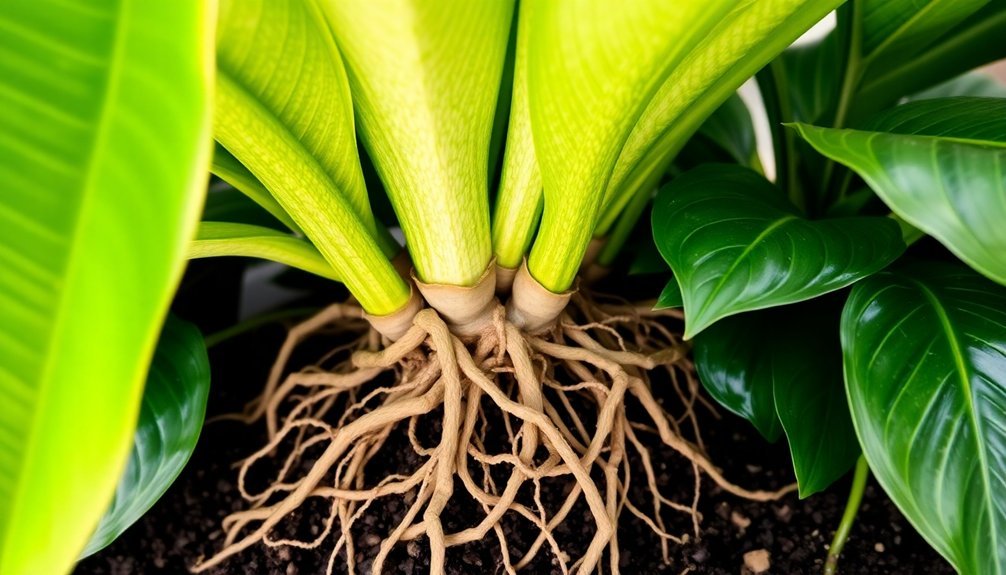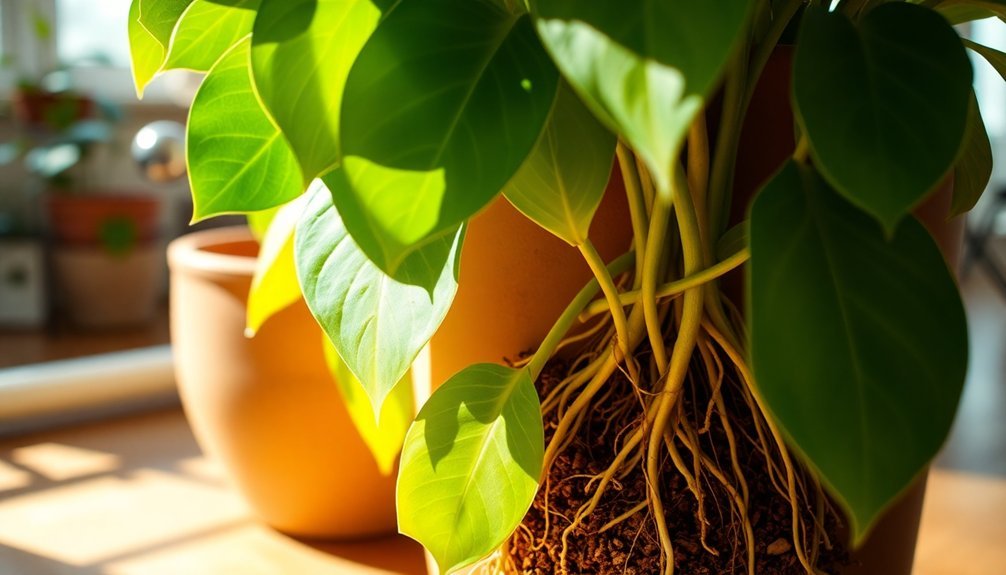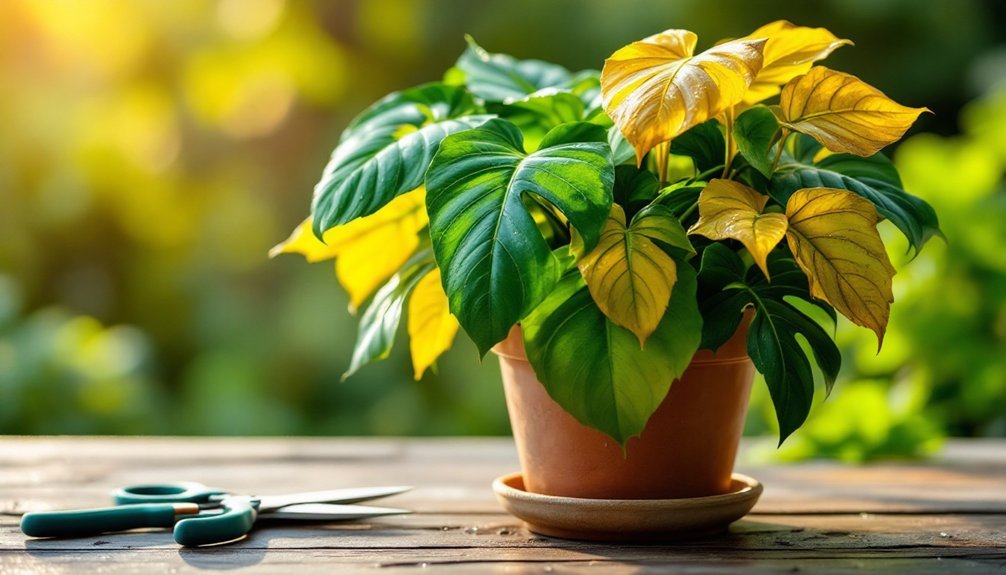Snake Plants, Peace Lilies, and Golden Pothos rank as the top air-purifying plants that respond well to root pruning. You'll want to trim Snake Plant roots every 2-3 years, Peace Lilies annually in spring, and Pothos every 1-2 years to prevent overcrowding. Don't remove more than one-third of the root mass during pruning, and always repot in fresh, well-draining soil. Understanding each plant's unique root patterns will help maximize their air-cleaning potential.
Understanding Root Growth Patterns in Snake Plants for Optimal Pruning

While snake plants are renowned for their air-purifying abilities, understanding their root growth patterns is vital for successful pruning. Their rhizomatic root system spreads horizontally, adapting to various pot sizes and making them perfect candidates for root pruning.
You'll know it's time to prune when your snake plants become pot-bound, with roots circling the pot or emerging from drainage holes. To maintain healthy root development and maximize nutrient absorption, you should trim roots every 2-3 years.
Don't remove more than one-third of the root mass during pruning, as this helps prevent stress and maintains the plant's air-purifying functions. After pruning, proper soil moisture and environmental conditions are important for recovery.
When done correctly, root pruning stimulates vigorous foliage growth and guarantees your snake plant continues to thrive.
Maximizing Peace Lily Root Health Through Strategic Trimming
Because Peace Lilies excel at purifying indoor air, maintaining their root health through strategic trimming is crucial for their effectiveness.
You'll want to prune your Peace Lily's roots every 1-2 years during spring, when these air-purifying plants are in their active growth phase.
To maximize your Peace Lily's root health, inspect the root system carefully and remove any black or mushy sections that indicate rot.
Trim healthy roots by about one-third to encourage healthy new growth.
After pruning, repot your plant in well-draining soil to guarantee ideal root health and sustained fresh oxygen production.
This strategic approach to root maintenance won't just prevent rot – it'll enhance your Peace Lily's continuous contribution to indoor air quality.
Regular monitoring and pruning can greatly extend your plant's lifespan and air-purifying capabilities.
Golden Pothos Root Management for Enhanced Air Purification

Since Golden Pothos ranks among the most effective air-purifying plants, maintaining its root system through proper pruning is essential for optimal toxin removal. You'll need to prune your Golden Pothos roots every 1-2 years to guarantee peak air-purifying efficiency and prevent root-bound conditions.
| Timeline | Action | Benefit |
|---|---|---|
| Year 1 | Initial Root Pruning | Prevents overcrowding |
| Year 1.5 | Check Root Health | Monitors growth pattern |
| Year 2 | Major Root Trim | Enhances toxin removal |
| Year 2+ | Repot in Fresh Soil | Boosts nutrient uptake |
When you're ready to prune, gently remove your plant from its pot, trim thick or tangled roots, and repot in nutrient-rich soil. This root management strategy won't just improve your plant's air purification capabilities—it'll also promote healthy growth and result in a more robust plant.
Frequently Asked Questions
What Plant Purifies the Air the Most?
You'll find the Peace Lily to be the most effective air purifier, as it's exceptional at removing multiple VOCs, including benzene and carbon monoxide, while thriving in low-light conditions that most homes have.
What Plant Removes 78% of Airborne Mold?
English Ivy's your go-to plant for fighting airborne mold, as it'll remove 78% of it within 12 hours. You'll benefit from its dense foliage that traps moisture and absorbs mold spores effectively.
What Plant Is NASA Recommend for Air Purifiers?
NASA recommends Peace Lily, Spider Plant, and Snake Plant as top air purifiers for your home. You'll benefit from their ability to remove toxins like benzene and formaldehyde while improving your indoor air quality.
What Plants Are Good for Clearing the Air?
You'll find Spider Plants, Peace Lilies, Golden Pothos, English Ivy, and Boston Ferns are excellent for purifying indoor air. They'll remove toxins like formaldehyde, benzene, and mold while requiring minimal maintenance.
In Summary
Take control of your indoor air quality by mastering root pruning techniques for these powerful purifying plants. You'll see improved growth and air-cleaning capabilities when you maintain snake plant's thick rhizomes, trim peace lily's delicate root system, and manage golden pothos' vigorous roots. Remember to prune during the growing season and always use clean, sharp tools. With proper root care, you're creating a healthier home environment.





Leave a Reply